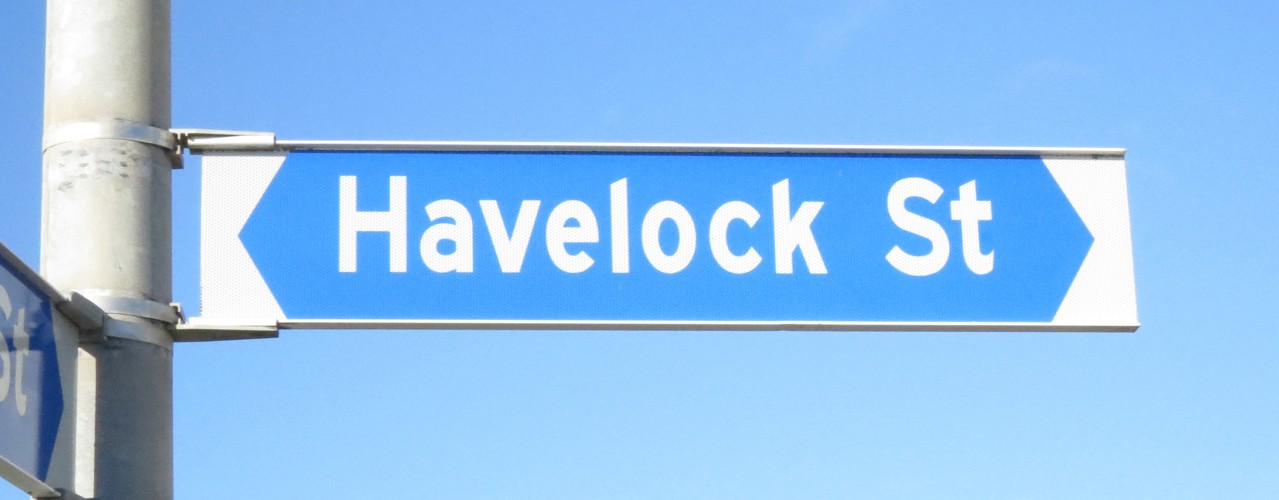 Havelock Street sign (2020). Rachel Sonius. Word on the Street image collection.
Havelock Street sign (2020). Rachel Sonius. Word on the Street image collection.
 Havelock Street sign (2020). Rachel Sonius. Word on the Street image collection.
Havelock Street sign (2020). Rachel Sonius. Word on the Street image collection.
Havelock Street in Opunake was named after a British soldier known as “the hero of the Indian Mutiny”.
Henry Havelock was born in Sunderland on 5 April 1795, the son of a wealthy shipbuilder. He and his three brothers were forced to join the army after their mother died and their father lost the family fortune through poor investments. Determined to serve in India with his brothers, he joined the 13th Regiment and began learning Persian and Hindi. He served with distinction in the First Anglo-Burmese War (1824-26), the First Afghan War (1839-42) and the Sikh Wars (1845-46). Havelock’s skills as an interpreter and his detailed reports, many of which were reprinted in newspapers back home, were as valuable as his courage. He was promoted to quartermaster general then adjutant general, answerable only to the chief-of-staff and Queen Victoria herself.
The Indian Mutiny – now more commonly termed the First War of Indian Independence – broke out in May 1857 near Delhi and escalated into a general uprising against British rule. Havelock won a series of victories despite his troops being greatly outnumbered, including rescuing the British commissioner and other European inhabitants of the city of Lucknow, which had been besieged by 60,000 “rebels” for months. Havelock was rewarded with a knighthood and promoted to major general but died of dysentery on 24 November 1857 at the age of 62. He was survived by his wife Hannah and four of their eight children.
Havelock’s statue was erected in Trafalgar Square in 1861, the first ever created from a photograph, and there are streets named after him throughout the former British Empire. The towns of Havelock and Havelock North here in New Zealand were also named in his honour. Havelock Street was Opunake’s first off the “Main Street”, fitting for a town that was originally a military redoubt. Interestingly, Havelock’s eldest son, also a soldier, served in New Zealand in the 1860s, taking part in the British and colonial forces’ Invasion of Waikato.
This story was originally published in the Taranaki Daily News.
Please do not reproduce these images without permission from Puke Ariki.
Contact us for more information or you can order images online here.